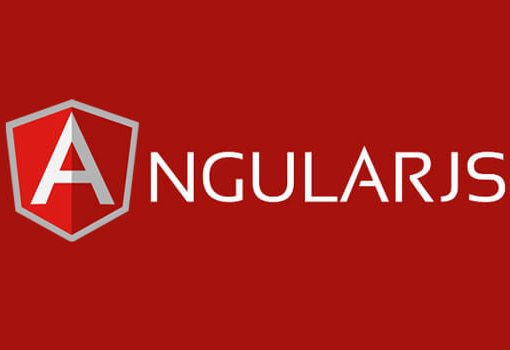Front End Technologies: Crafting Digital Experiences
In the ever-evolving landscape of web development, front end technologies play a pivotal role in shaping the digital experiences we encounter daily. Let’s take a journey through the evolution, key components, and future trends that define front end development.
1. Introduction
Front end technologies encompass the tools and languages used to build the user interface and user experience of a website or application. As the digital realm becomes more sophisticated, so do the technologies driving the visual and interactive aspects of our online interactions.
2. The Evolution of Front End Technologies
From the static web pages of the early internet to today’s dynamic and responsive applications, front end technologies have witnessed a remarkable evolution. This section will explore the transformative journey that has brought us to the current state of front end development.
3. The Role of HTML in Front End Development
3.1 Structure and Semantics
HTML (Hypertext Markup Language) forms the backbone of web content by providing the structure and semantics that browsers interpret. Understanding its role is crucial for anyone venturing into front end development.
3.2 HTML5 Innovations
The advent of HTML5 brought forth new elements and attributes, empowering developers to create more expressive and feature-rich web pages. We’ll delve into the innovations that HTML5 introduced to the front end landscape.
4. Styling with CSS: Beyond Aesthetics
4.1 Cascading Style Sheets Basics
CSS goes beyond aesthetics; it shapes the visual identity of a website. We’ll explore the basics of CSS and how it cascades styles to create a harmonious and visually appealing design.
4.2 CSS Preprocessors and Frameworks
To streamline styling workflows, developers often turn to preprocessors like Sass and frameworks like Bootstrap. Learn how these tools enhance the efficiency of front end development.
5. Bringing Interactivity with JavaScript
5.1 The Power of Vanilla JavaScript
JavaScript breathes life into static web pages, enabling dynamic interactions. We’ll explore the foundational aspects of vanilla JavaScript and its role in creating engaging user experiences.
5.2 Popular JavaScript Libraries and Frameworks
From jQuery to React and Vue.js, a plethora of JavaScript libraries and frameworks cater to diverse development needs. Discover the strengths and best use cases for these essential tools.
6. Responsive Web Design: Adapting to All Screens
6.1 Mobile-First Approach
As mobile usage skyrockets, adopting a mobile-first approach is imperative. Understand how this strategy ensures a seamless experience across various devices.
6.2 Media Queries and Flexible Grids
Media queries and flexible grids are the building blocks of responsive design. Dive into the technicalities of creating layouts that adapt to different screen sizes.
7. The Rise of Single Page Applications (SPAs)
7.1 Benefits of SPAs
SPAs offer a seamless and fluid user experience by loading content dynamically. Explore the advantages that make SPAs a popular choice for modern web applications.
7.2 Frameworks for Building SPAs
Angular, React, and Vue.js are at the forefront of SPA development. Learn how these frameworks simplify the process of building robust and interactive single page applications.
8. Web Components: Reusable Building Blocks
8.1 Shadow DOM
Web components introduce encapsulation through features like the Shadow DOM. Discover how this technology enhances code modularity and reusability.
8.2 Custom Elements
Custom elements enable developers to create their HTML tags, fostering the creation of truly modular and customizable components. Uncover the potential of custom elements in front end development.
9. The Role of Front End Build Tools
9.1 Task Runners
Task runners like Grunt and Gulp automate repetitive tasks, boosting development efficiency. We’ll explore how these tools streamline front end workflows.
9.2 Module Bundlers
Module bundlers like Webpack optimize the delivery of JavaScript modules. Understand their role in managing dependencies and improving overall application performance.
10. Progressive Web Apps (PWAs): A New Frontier
10.1 Offline Capabilities
PWAs offer offline capabilities, ensuring users can access content even without a stable internet connection. Discover how this feature enhances user engagement.
10.2 App-Like User Experiences
Blurring the line between web and mobile apps, PWAs provide app-like experiences on the web. Explore the characteristics that define this innovative approach to web development.
11. Accessibility in Front End Development
11.1 Inclusive Design Practices
Ensuring websites are accessible to all users, including those with disabilities, is a moral and legal imperative. Learn the inclusive design practices that make digital experiences universally accessible.
11.2 Assistive Technologies
Assistive technologies like screen readers bridge the gap for users with disabilities. Gain insights into how front end developers can ensure compatibility with these essential tools.
12. Testing and Debugging Front End Code
12.1 Unit Testing
Effective testing is crucial for maintaining code quality. We’ll explore unit testing and its role in catching bugs early in the development process.
12.2 Browser Developer Tools
Browser developer tools are a front end developer’s best friend for debugging and optimizing code. Discover the essential features that aid in efficient troubleshooting.
You may be interested in:
Exploring the Benefits of SAP Consulting for Small Businesses





